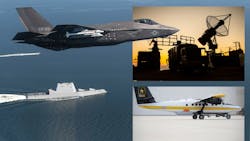Digital Techniques Train Cognitive EW Systems (.PDF Download)
Electronic-warfare (EW) systems are often considered the most stable and dependable portions of a military electronics suite. But efforts to “modernize” defense electronics systems apply very much to EW technology. They’re drawing from advances not just in spectrum extending to millimeter-wave (mmWave) frequencies, but also in the improved capabilities of more powerful microprocessors, faster data converters, and expanded artificial intelligence (AI). In terms of global EW technology, the U.S. hopes to close the gaps between the EW technologies employed by its own troops and the advanced EW systems being developed by Russian and Chinese researchers for their troops.
By applying AI and machine-learning (ML) techniques to EW systems, threats can be identified by machines and computers rather than human pilots and system operators. Subsequently, the process of selecting an electronic-countermeasures (ECM) response to a threat can be automated.
